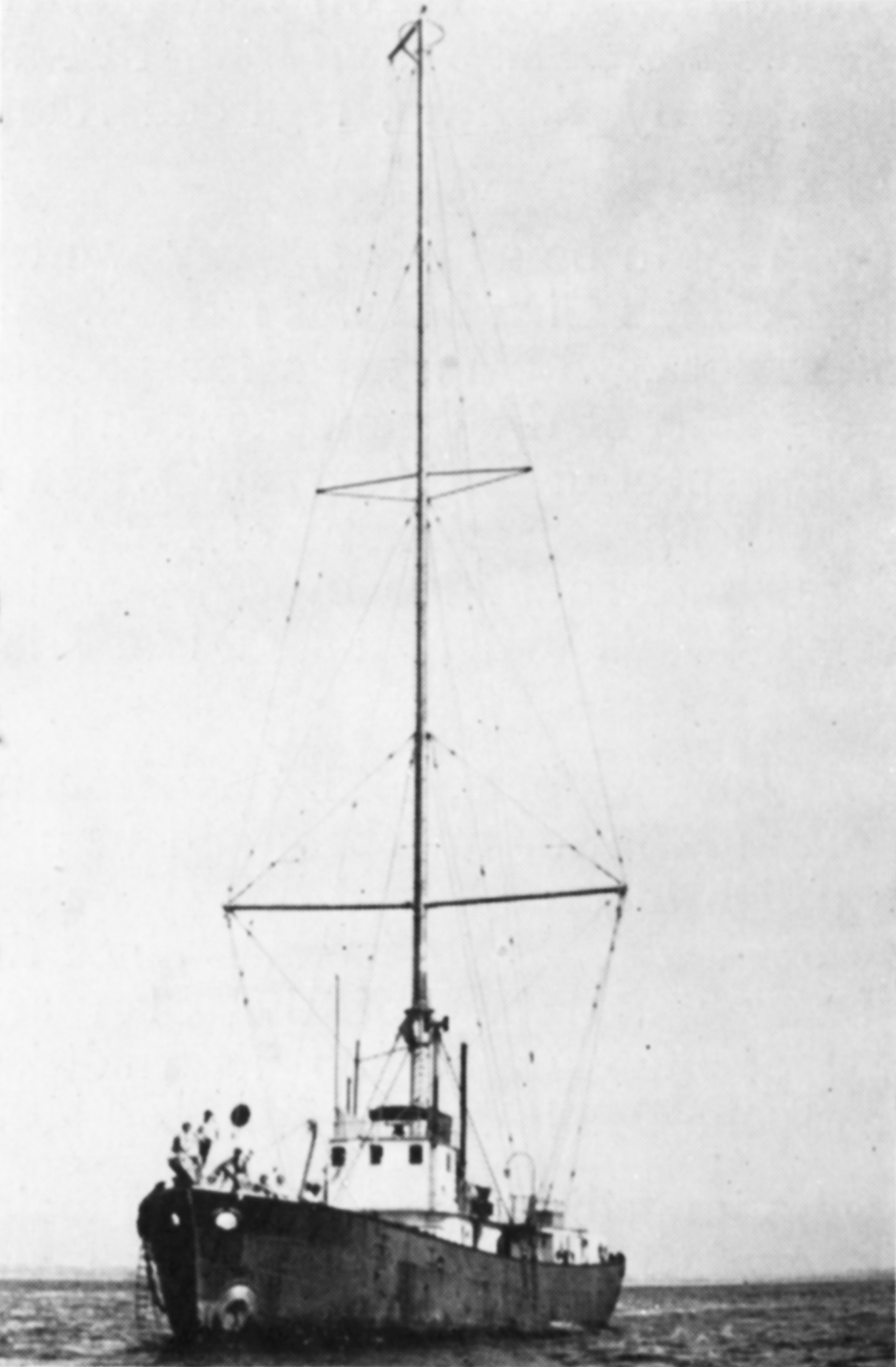
SWINGING TO YOU .... ON 242
Radio Scotland, which transmits music, entertainment and feature programmes every day to listeners not only in Scotland, but all over Great Britain and Europe, broadcasts from a ship moored off the West coast of Scotland.
This is the “Comet”, a former Irish lightship built at John Brown’s famous yard on the Clyde. She holds the technical equipment and transmitters, and the broadcasting team of station announcers, disc jockeys and technicians.
The “Comet” took up position off Dunbar, on the East Coast, in late December, 1965. Experts immediately boarded her to complete the installation of technical apparatus which had started earlier in the Channel Islands, and at ten minutes before midnight, on Hogmany, New Year’s Eve, 1965, Radio Scotland went on the air.
Paul Young, a youthful Edinburgh actor well-known for his appearances on the Scottish stage and television screen, made the opening announcement; Mr T. V. Shields, the managing director of City and County Commercial Radio (Scotland) Ltd., made a brief statement of the company’s intent, and offshore commercial radio had arrived in Scotland!
Within a matter of days Radio Scotland found itself well-established as a new and exciting entertainment medium covering an area much wider than was originally anticipated; one surprise reaction here was the amount of mail which began to pour in from the Scandinavian countries. Not only the Scots, but also the Norwegians, Swedes and Danes found themselves with a new station giving them the kind of programming they liked.
The primary target, however, was Scotland — and the Scots were quick to react, pouring in a flood of mail requesting that records be played for individuals, for factory workshops, for hospital patients, office and shop staffs. All over the country radio receivers were moved across the dial to 242 metres on the medium waveband, and Radio Scotland’s team of disc jockeys found themselves becoming national personalities.
A few months after transmissions began, Mr Shields, as executive in charge of the entire operation, found himself faced with a tremendous problem: Radio Scotland, heard clearly up and down the East Coast of Scotland, was not penetrating all sections of the West.
And round the north <of the United Kingdom went the “Comet”. Not without adventure — for there were storms and even a fire hazard at one stage — and not without success. For not long after the “Comet” was re-moored at her new station off Troon, in the Firth of Clyde, a survey carried showed that Radio Scotland mustered a listenership of FORTY EIGHT PER CENT of the adult population of Scotland.
This meant that not only had thousands of new listeners been gained in the vital, industrial areas of the West, but that those listeners in the East who were already Radio Scotland enthusiasts had retained their keenness for their very own station.
To-day Radio Scotland is a feature of Scottish life. Everywhere you go, you can hear the familiar “Black Bear” signature
Sackloads of correspondence flow in daily from steady listeners in Ireland, in Germany, Finland, Holland, Belgium and France.

